Some ships spend their entire careers under a single owner, under the same name, and same national flag, others seem to have trouble finding a niche and end up spending their lives passed around over and over again, adopting numerous new identities and undergoing constant rebuilding and refitting to suit the needs of their new owners. Few have ever been passed around as much, or rebuilt as frequently, as the USS General W.P. Richardson.
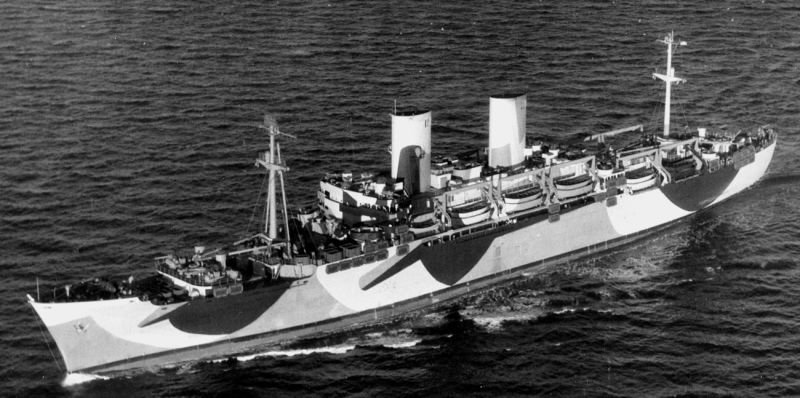
General W.P. Richardson started life in 1944 as one of 10 identical P2-S2-E2 troop transport vessels designed by the US Maritime Commission and built for the US Navy by Federal Shipbuilding and Drydock Company in Kearny, New Jersey between 1943-1945. As built, they measured 17,951 gross tons and 623 feet long, with 18,000hp steam turbines giving a range of 15,000 nautical miles at 19 knots. They were capable of carrying 4,800 troops, and their unusually attractive external appearance – with a raked bow, symmetrical twin funnels, and gracefully curved and terraced superstructure – hinted at their intended postwar purpose, all were designed for easy conversion to civilian ocean liners, optimized for service on South American routes. An additional 8 smaller variants were built by Bethlehem Steel Corporation in Alameda, California as the P2-SE1-E1 class between 1944-1945, with 2 more unfinished hulls sold to American President Lines and completed as passenger-cargo combination liners in 1947.
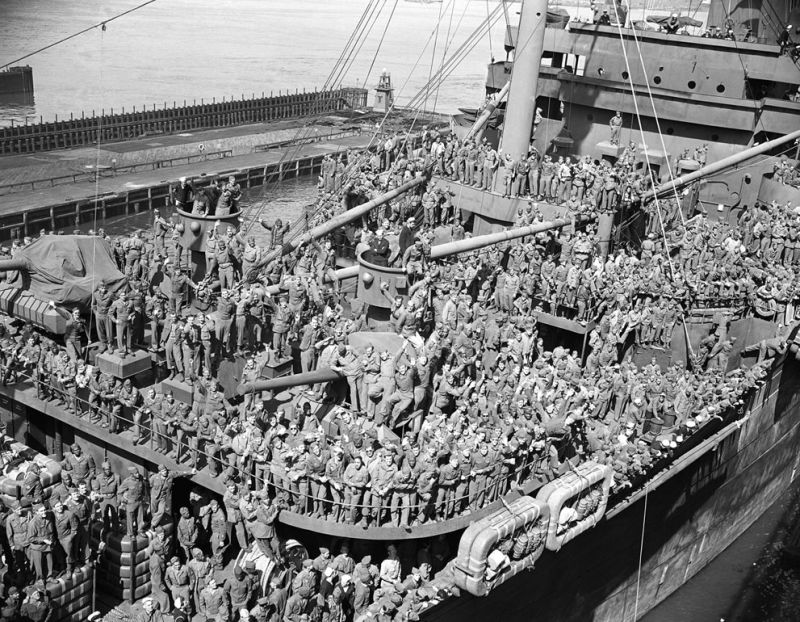
Postwar, the planned conversion to civilian liners never really materialized – the US shipping industry never expanded enough to require the capacity, and the US government was reluctant to sell them overseas, so, for the most part, they remained in military service through Vietnam with occasional lay-ups during times of reduced demand, with the last one being retired in 1971 (though one would be used as a barracks ship in Bremerton, Washington at least into the late 1980s).

The lone exception was General W.P. Richardson. In an effort to stimulate interest from private shipping companies, the US Maritime Administration chartered her to American Export Lines in 1949 and provided funding for a rebuild into a transatlantic ocean liner for New York-Haifa, Israel service (via Gibraltar and Genoa). Renamed LaGuardia, the conversion work was performed at Ingalls Shipbuilding Corporation in Pascagoula, Mississippi. Upon completion, she carried 157 First Class and 452 Tourist Class passengers and measured 18,000 gross tons. LaGuardia entered service with American Export in Summer, 1949, and remained in the fleet through December, 1951, when she was returned to the Maritime Administration. By then, American Export’s new sister ships Independence and Constitution had been delivered, and LaGuardia had proved more expensive to operate than anticipated. A brief return to troop transport service for the Korean War followed, after which the ship was laid up in 1952.

But, the Maritime Administration would not give up on the goal of proving the P2 hull’s viability as a civilian liner. In early 1957, she was sold outright to the newly formed Hawaiian Steamship Company (a subsidiary of the Textron Corporation) and renamed Leilani for service from San Francisco-Honolulu. The new venture was not successful, Hawaiian Steamship collapsed in bankruptcy in the Spring of 1959 and Leilani was seized by the Maritime Administration and auctioned off for nonpayment of debts. In 1960, the ship was acquired by American President Lines, renamed President Roosevelt, and underwent her most extensive rebuilding yet with reshaped funnels, dramatically enlarged superstructure, and sleek, Mid Century Modern interiors with Japanese influences appropriate for her new San Francisco-Yokohama transpacific service, which began in April, 1962 after nearly 2 years of rebuilding work in the shipyard. President Roosevelt remained in this role for 8 years, until increasing competition from airlines forced APL to put the ship up for sale in 1970.

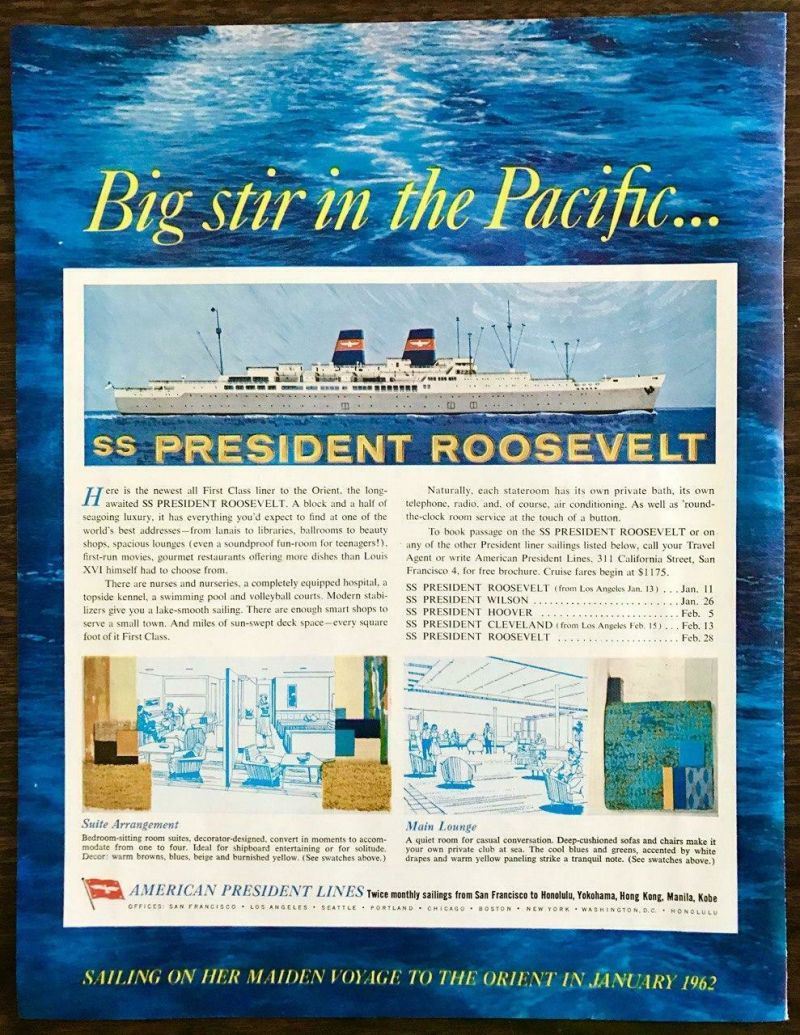
The buyer was Chandris Lines of Greece, who specialized in buying older, yet solidly built, liners at fire sale prices and expertly refurbishing them for either cruise ship service, or low budget immigration liner service from Europe-Australia under contract to the Australian government. Under Chandris’ ownership, she was renamed Atlantis and underwent an even more comprehensive reconstruction at Chandris’ own yard in Perama, Greece, between 1970-1971 at a cost of $8.5 million, about 4 times what Chandris had paid for her. Upon completion, Atlantis looked hardly recognizable with an expanded and totally refaced superstructure making her look at least 20 years younger, with only the twin funnels and classic cruiser stern betraying her 1940s vintage. Atlantis was used in Caribbean cruises for the US market from 1971-1972, at which point high operating costs pushed Chandris to sell her to US-based Eastern Steamship Lines, a storied 19th century shipping line with Vanderbilt connections that became a pioneer in the leisure cruise market after WWII.
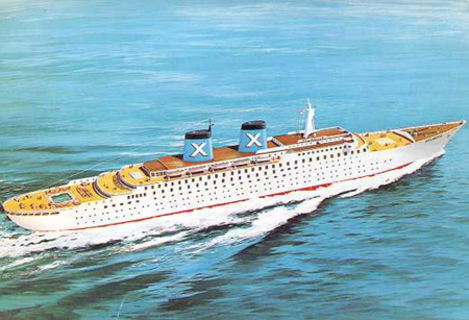
Under Eastern Steamship, she was renamed again as Emerald Seas, and enjoyed the longest period of stability of her career, surviving with Eastern, and its successor company, Admiral Cruises, until 1992. By then, Admiral had been acquired by Royal Caribbean and there was no place for an old WWII-era converted troop transport in their modern fleet. During a brief lay-up in 1992, she actually changed hands several times through a couple different holding companies, being renamed Terrifica, Fantastica, Funtastica, and Sun Fiesta, until finally acquired by Festival Cruises of Greece and renamed Sapphire Seas for continued service, cruising primarily from California to Mexico in the 1992-1994 period.
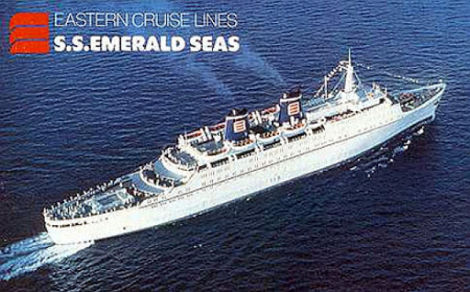
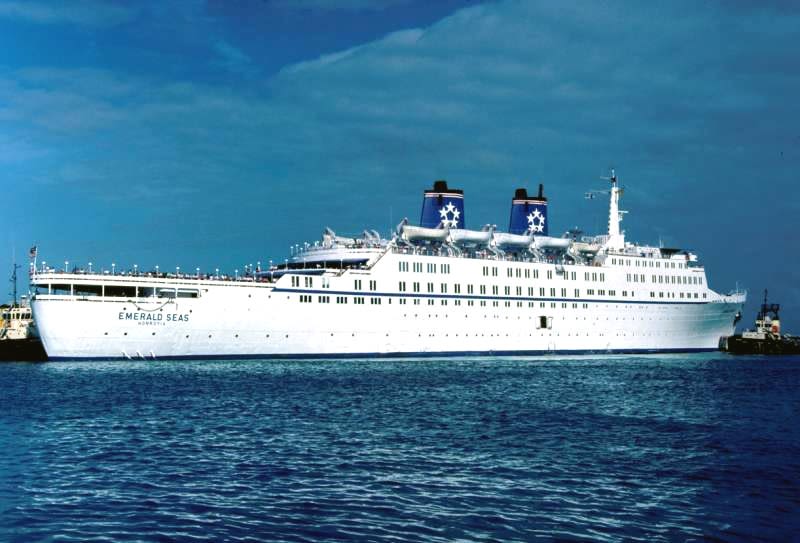

In October, 1994, Festival pulled her from service and laid her up in Greece, where she sat for nearly 4 years. In the spring of 1998, she was chartered out as a hotel ship in Lisbon, Portugal for the World’s Fair under the name Ocean Explorer I, after which she returned to lay-up in Greece, though there was a brief charter to a British travel agency for a few Mediterranean cruises in 1999.
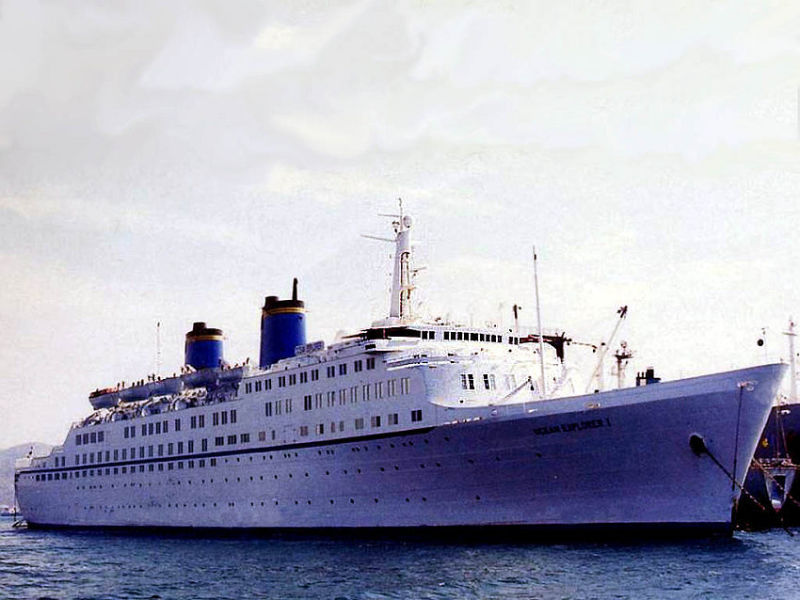
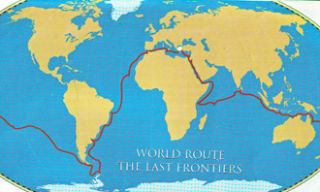
In 2000, she returned to regular service with the Canadian-based World Cruise Company, operating a unique program of continuous around-the-world cruises via Cape Horn and Suez, with passengers able to purchase segments of the trip and embark/disembark in any port en route, or stay on board for the entire 130 day circumnavigation. High operating costs caused the bankruptcy of World Cruise in 2001, causing Ocean Explorer I to return to lay-up until sold for scrap and demolished in Alang, India in December, 2004 under the delivery name Explorer, pretty well exactly 60 years to the date since her initial delivery to the US Navy in 1944.

Amazingly, the former General W.P. Richardson/LaGuardia/Leilani/President Roosevelt/Atlantis/ Emerald Seas/Fantastica/Terrifica/Funtastica/Sun Fiesta/Sapphire Seas/Ocean Explorer I was not not the last of the P2 transports afloat. General Nelson M. Walker (ex Admiral H.T. Mayo) was scrapped in Texas in 2005, and the last two survivors, General Edwin D. Patrick (ex Admiral C.F. Hughes) and General John Pope, were demolished in 2010, all after many decades of inactivity in the strategic reserve fleet.